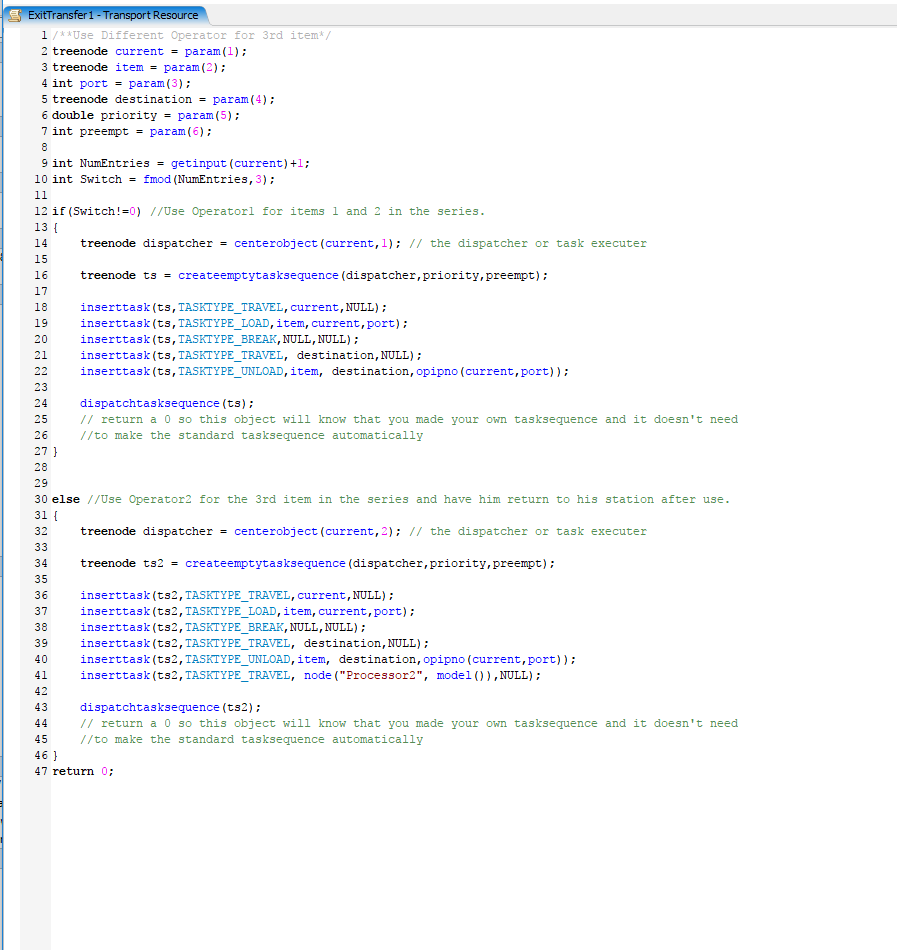Hello,
I'm trying to develop a model that does the follow: Processor 1 is controled by Operator 1 and the next station, Processor 2, is controlled by Operator 2.
The coordinated task sequence is contained in the ExitTransfer1 connected to Processor 1 and ExitTransfer2 connected to Processor 2, contains the task sequence for Processor 2. Operators are controlled by a dispatcher.
I want that the Operator 2 travels to Processor 1 after Operator 1 process 2 items (using a for loop), but by any means operator 1 should travel to processor 2.
Operator 2 travels, loads an item from the conyeyor, unload it in Processor 1 and travels back again to Processor 2 to continue loading and unloading items from the second conveyor. However, at some point, the operators stop working. I have tried by changing the blocking values in the allocate and deallocate commands, as well as changing the location of these in the code.
Additionally, when the for loop is executed for the Operator 1 to process the first two items, only the first item reaches the second station and the second one seems like dissapearing. I managed to fix that by changing the deallocation command for Operator 1 but then I get other errors.
I attach the model.
Thanks in advance.
Kind regards.
Sofia

